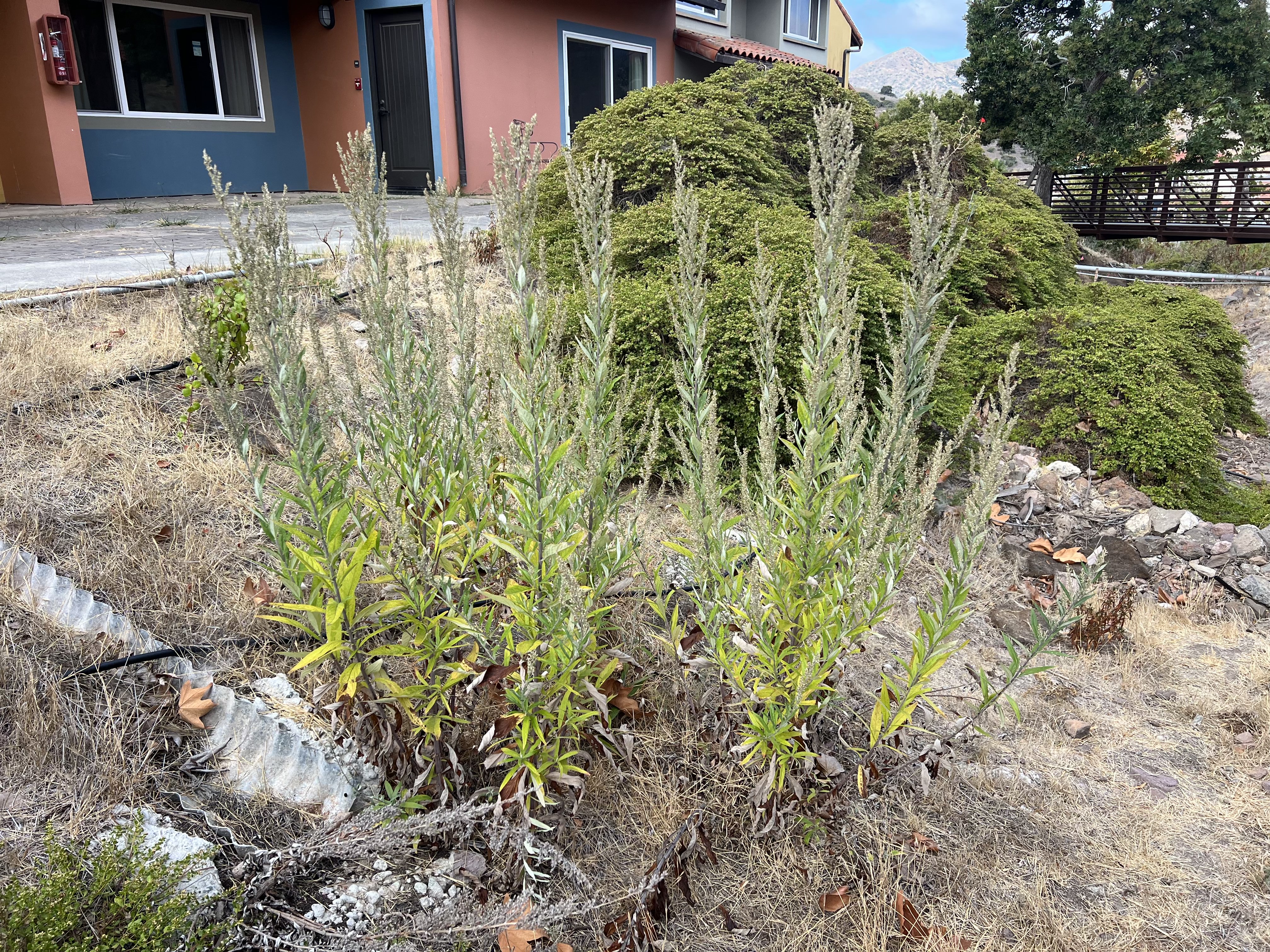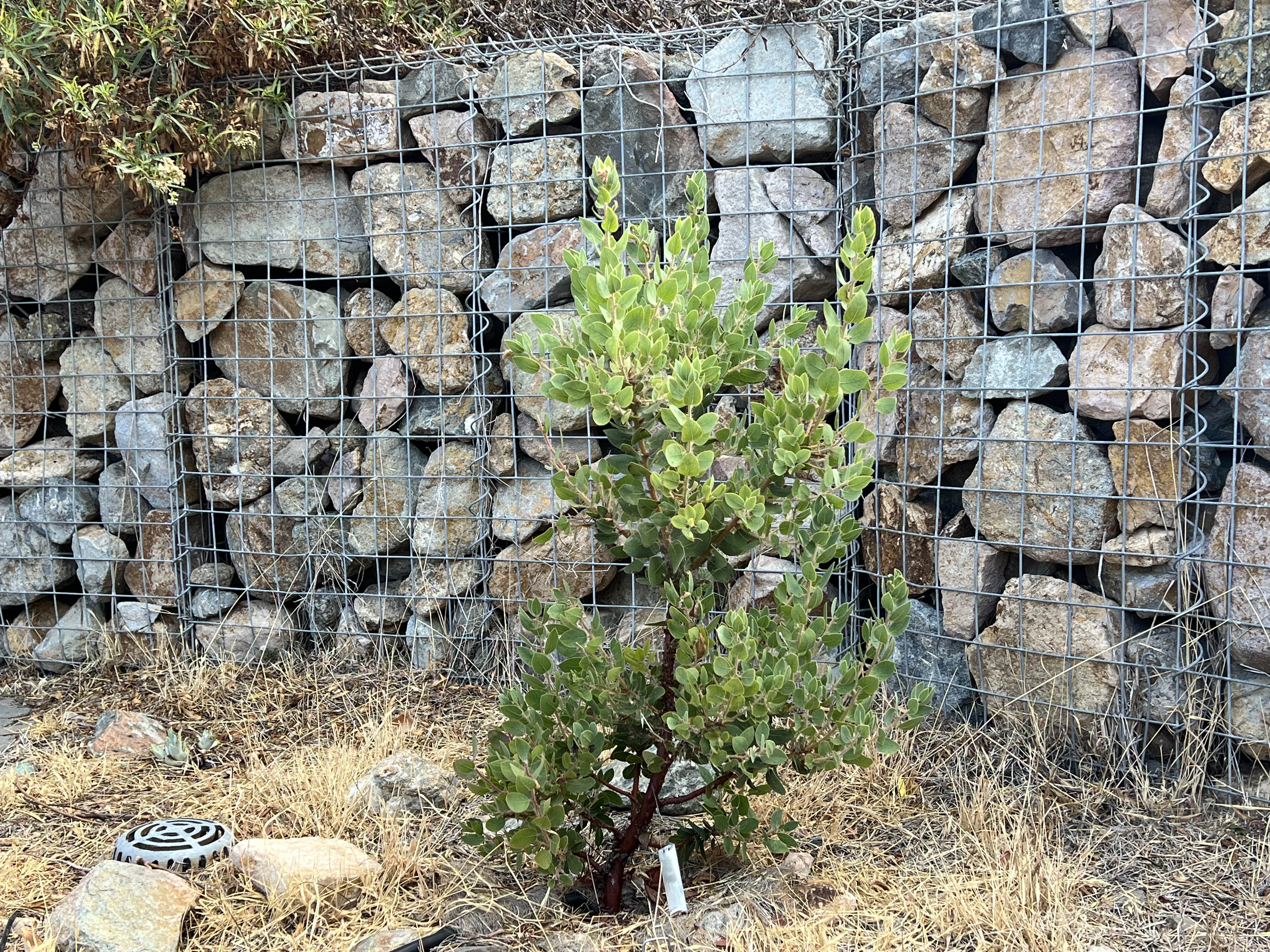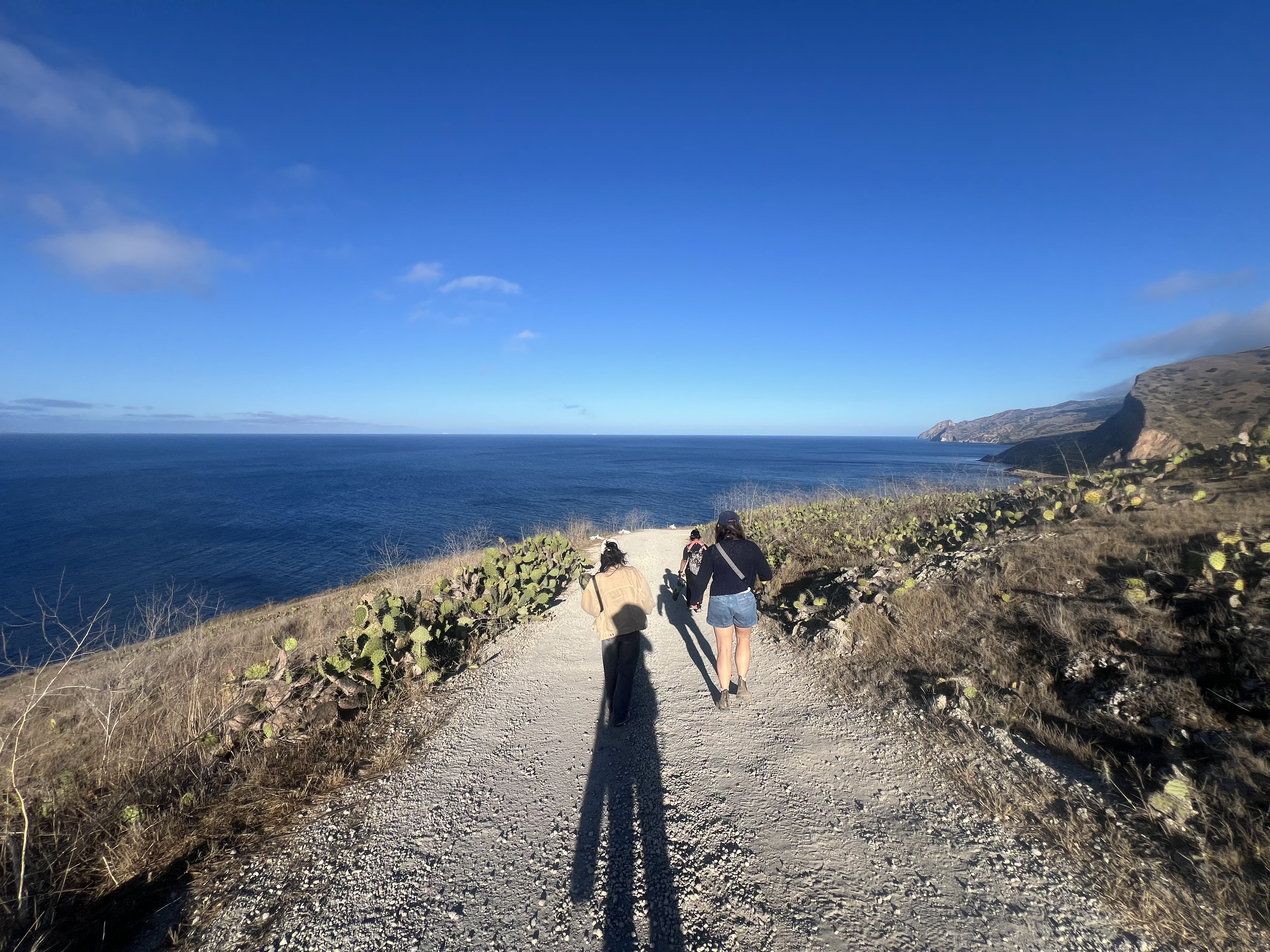
UNDER PRESSURE
Catalina Island Test Plot
By: Alex Robinson
DATE: September 10 2025
Traveling to Catalina Island, or nearly any of the islands off the coast of Southern California, can be an exercise in time travel. For a resident of the mainland bight, it is a multi-threaded journey. Yes, time goes back, rhythms slow, but time also jumps ahead and sideways. The day I visited the Test Plot at the Wrigley Marine Science Center, had a touch of foreshadowing. After our indeterminably long and late hot summer, I enjoyed what everyone agreed, was the first day of Fall, weeks ahead of the mainland.
Talks of cutting back and layoffs were in the air. In the wake of our president’s agenda, research money was drying up and USC was looking to cut research-related staff on the island, many of whom rely on their job to maintain residence on an island mostly owned by either the Catalina Company or Conservancy.
Due to a mild but persistent drought, the plants in this Test Plot have subsisted only by rain and water harvested in rain barrels around the campus. While the channel concentrates moisture, it also bakes, sheltered from coastal breezes by the surrounding dorms. The drought has reduced forage on the island, inducing (introduced) deer and the native squirrels especially to munch the plants. The delicious ones are “topiared” into the shape of their protective steel cages, if they are so lucky to have one.
After this year’s devastating fires, the fire department reassessed all building adjacent plantings. Now nearly all the plants we had planted were “trespassing.” If they had their way they would clear all vegetation within a 100 feet of all structures.
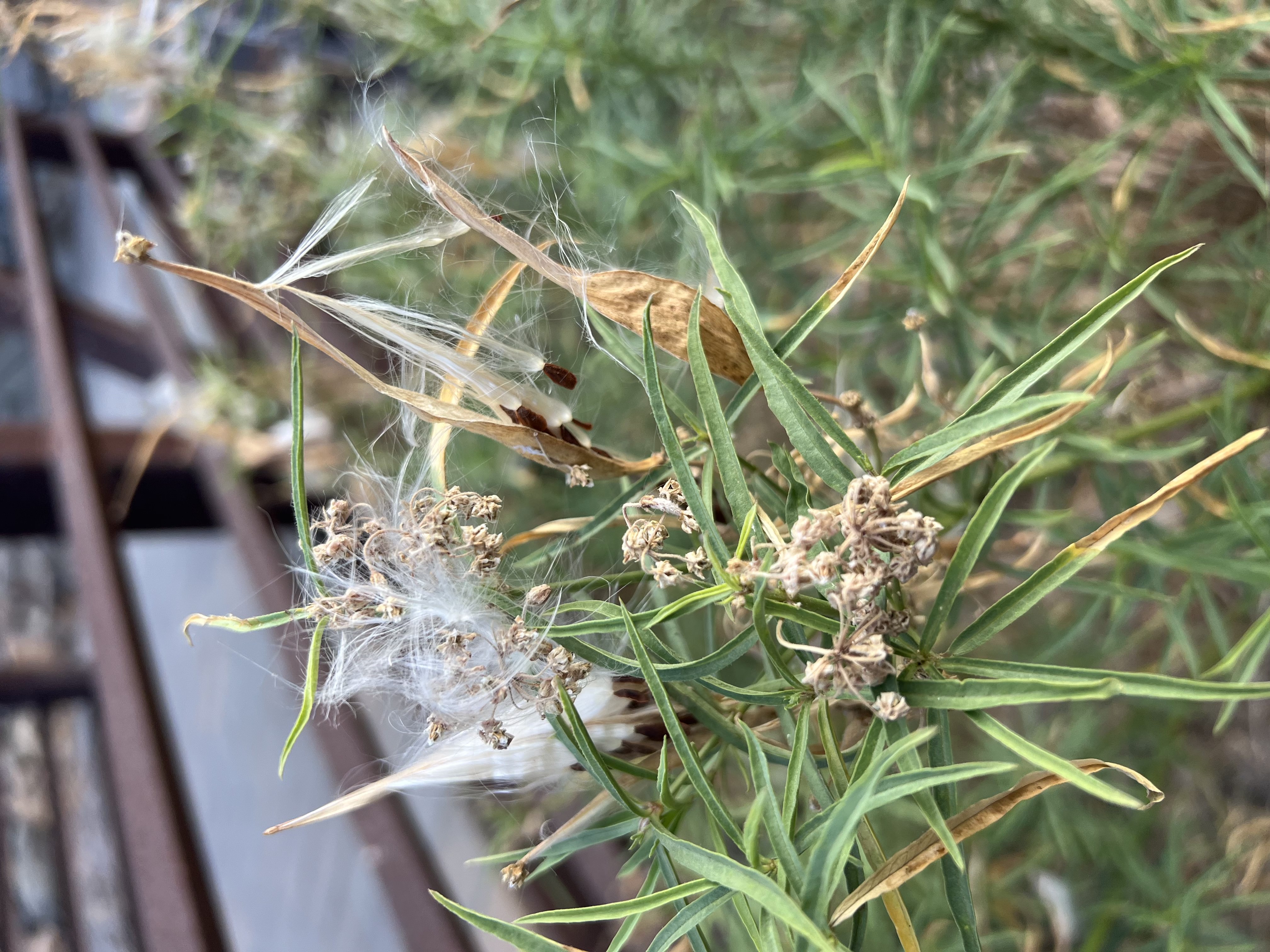
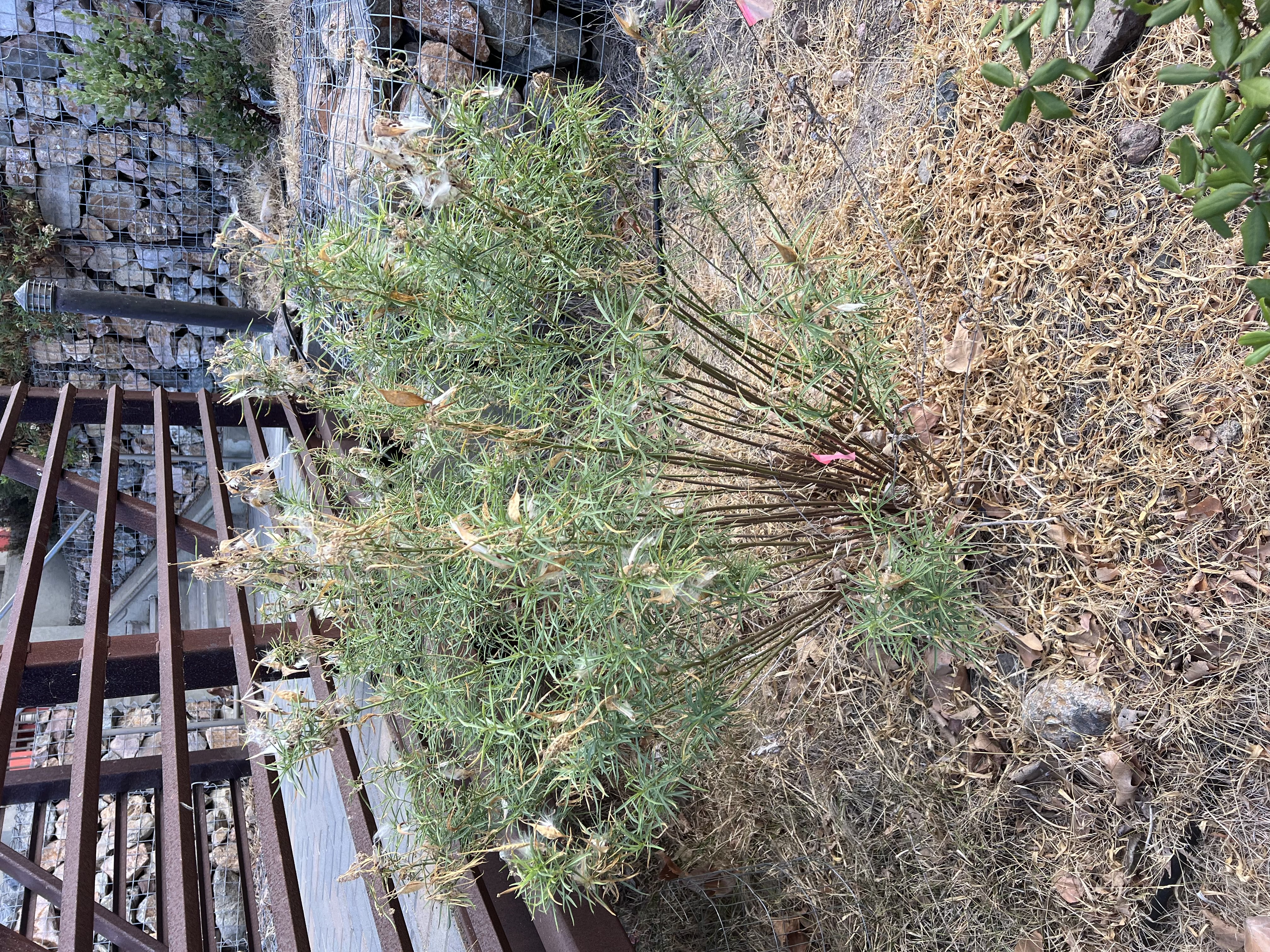
As I conducted my inventory, I could see and feel the pressures on the plot that its steward had skillfully been deflecting. As many islands are, Catalina is small, isolated, and exposed; it is simultaneously a place apart and precariously sensitive to ecological and political turbulence. Yet, thanks to her determined care, the plants are hanging in there and even thriving. The native milkweed has spread out triumphantly, shimmering in the sunlight, and seeding itself. The Catalina Ironwood, my favorite, was both being munched and had flowered, even though its planting pit had required an electric spade to excavate. Mugwort and Tule, two water loving species, were happy behind the check dams, we assembled two years ago. Many small plants, ones you would expect to be the first to go, were hanging on: yarrows, buckwheats, and Yerba Buena. The Catalina Manzanita was making a surprising sprint to its tree form.
All in all, perhaps more than 85% of the plants had survived. Casualties included the ever lovely St Catherine’s Lace buckwheat and the dudleyas, that while alive, had been nibbled to nubs. (All the plants were donated by the Catalina Conservancy over the last two years.)
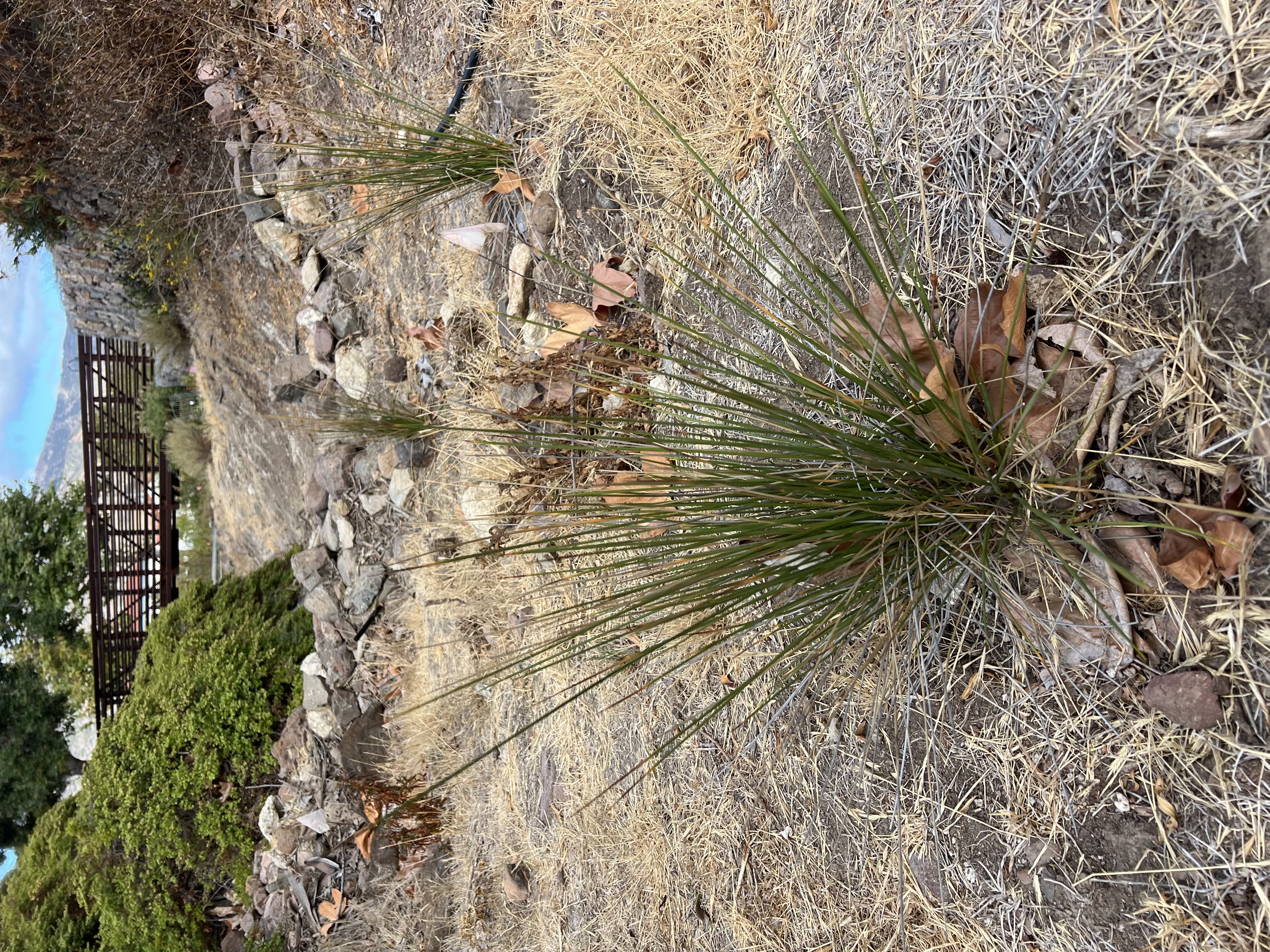
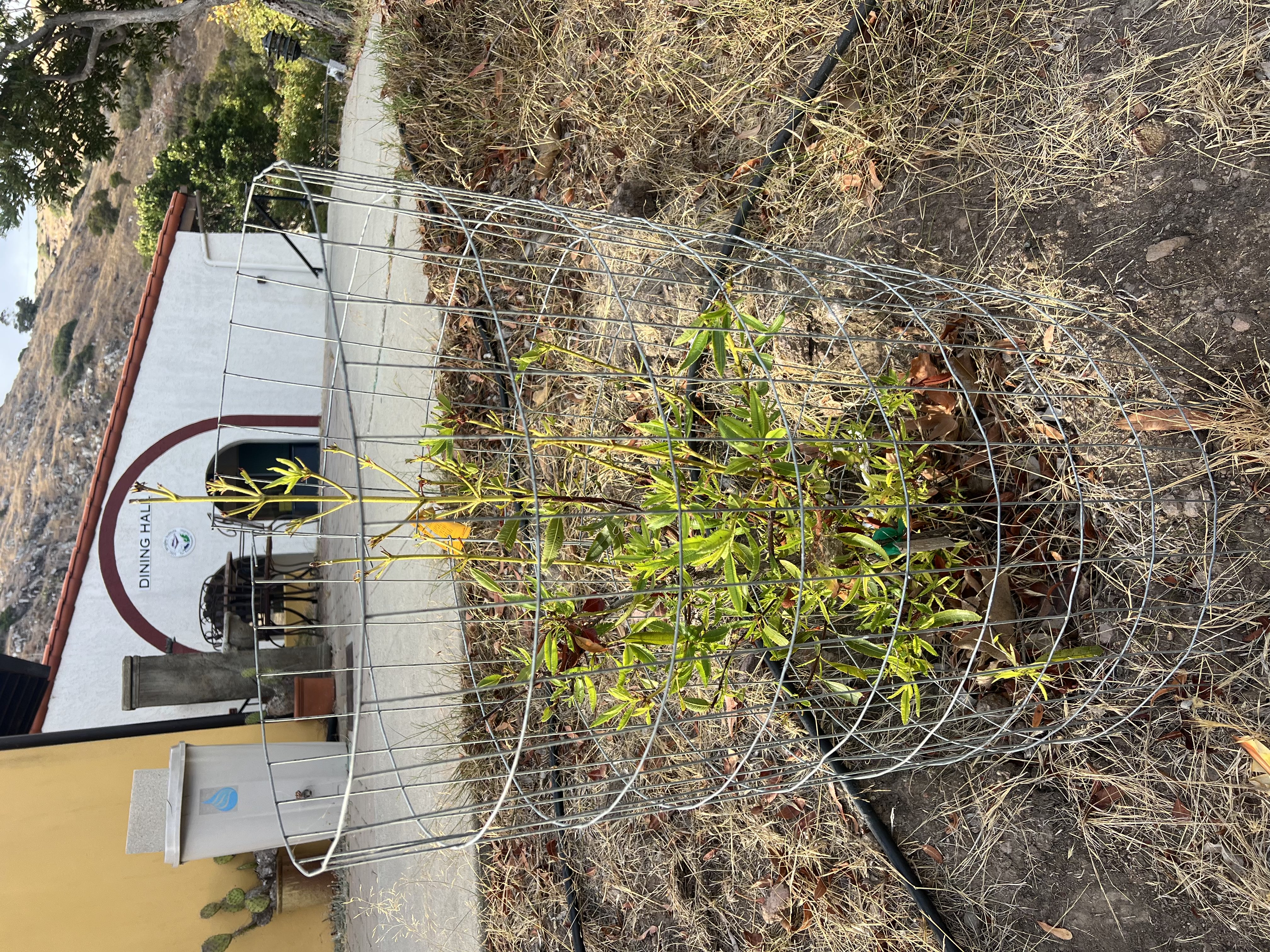
What is the future of this plot and its plants? Of this island and research station? More than most years, it is in flux.
Some of the pressures may subside. There is a plan to remove the deer from the island, that may actually be implemented; it would come with divisions and trauma, but would bring back biodiversity and radically improve all future restoration efforts.
Meanwhile, I wonder whether our island steward will survive the cuts. I worry for her and I worry for this plot. The whole situation speaks to how much persists by the constant care of steward(s). They are needed to manage the pressures, but here we can see limits, however complex. The fate of the plants and the people are precariously entangled, and particularly on this outpost. In ways they tell us how to care: when to care for each and when we must tackle the pressures themselves.
I finished my plant inventory and went down to jump in the water. Later I headed back to the mainland on the Miss Christi USC boat. A few weeks later I heard our local steward would be laid off.
